When disassembling the box, it is advisable to mark in any way, or remember where which part was, because many parts are similar.
When installing new parts, you need to take into account the gaps and lapping of adjacent parts.
Disassembly and repair of the gearbox is required for the following faults:
Increased noise in the gearbox:
- - bearing wear;
- - wear of gear teeth and synchronizers;
- - axial movement of the shafts.
Difficult shifting:
- - wear of the spherical joint of the gear lever, lack of lubrication in the assembly;
- - deformation of the gear lever;
- - burrs, curvature, contamination of the sockets of the rods, jamming of the locking crackers;
- - pollution of the splines of the sliding sleeve and the hub;
- - deformation of gear shift forks.
Spontaneous disengagement or fuzzy engagement of gears:
- - wear of holes for balls on rods, breakage of retainer springs;
- - wear of the synchronizer blocking ring;
- - failure of the synchronizer spring;
- - wear of the teeth of the synchronizer clutch or the synchronizer ring gear.
Low or leaking oil:
- - wear of the seals of the primary and secondary shafts;
- - loosening of the gearbox housing covers, damage to the gaskets;
- - loosening of the fastening of the clutch housing to the gearbox housing.
Let's consider the repair of a four-speed gearbox.
Repair of a five-speed gearbox is basically the same, with the exception of some details.
Repair of a five-speed gearbox will be discussed in the following article - Repair of a five-speed gearbox
We thoroughly clean the dirt, wash the gearbox housing with a brush and hot water and detergent from the outside and put it on the workbench with the clutch housing down.
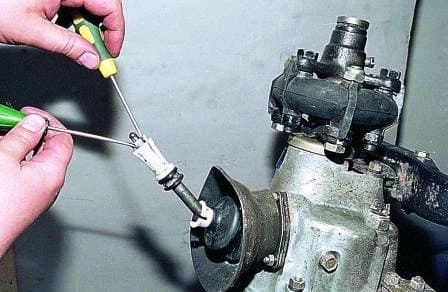
Use two screwdrivers to separate the sectors of the spacer
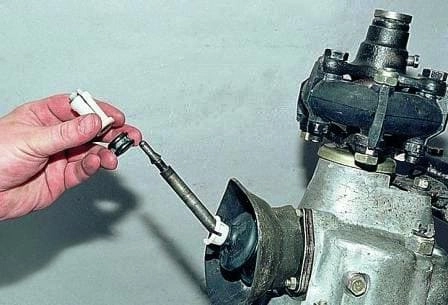
remove it and the damper rubber bushing.
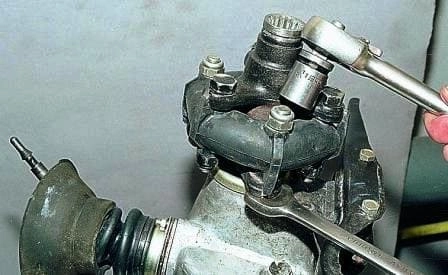
Remove the flexible coupling and flange from the secondary shaft of the gearbox
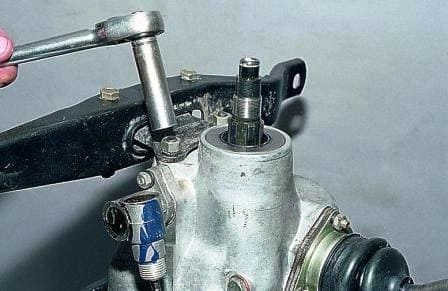
With a “13” head, unscrew the two nuts securing the support, remove the support
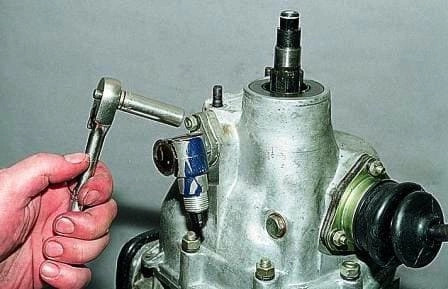
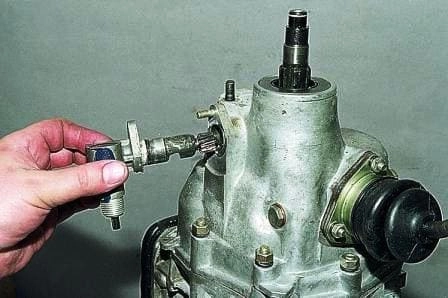
With a “10” head, unscrew the speedometer drive fastening nut and remove it.
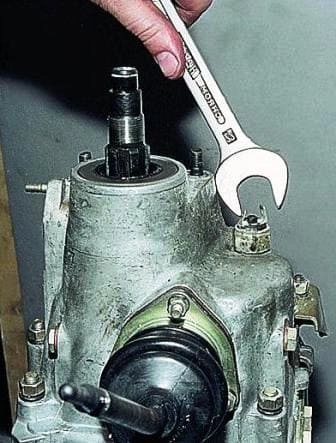
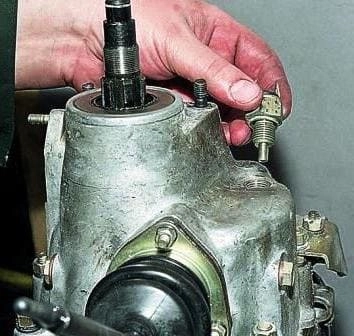
Using the “22” key, turn off the reverse light switch and remove it.

Using the “13” key, turn off the stop for moving the gear lever

Using the “13” key, we unscrew the two nuts securing the bracket
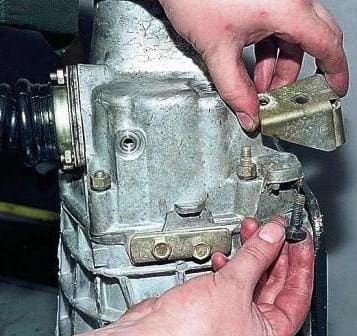
Remove the bracket and remove the square head bolt
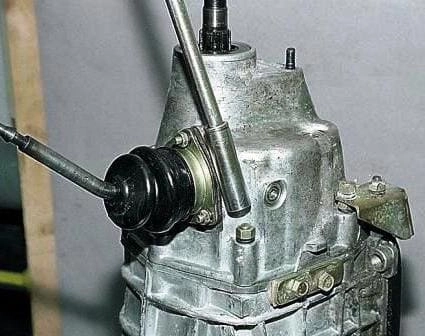
Using the “13” key, unscrew the rest of the nuts securing the rear cover of the gearbox
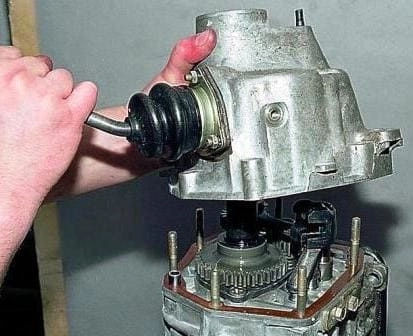
Remove the rear cover by moving the shift lever to the right to free it from the gearshift rods
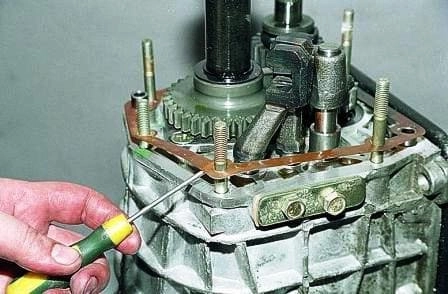
Carefully, trying not to damage, remove the rear cover gasket
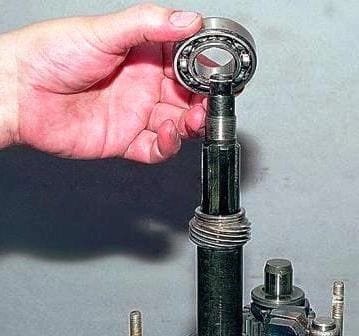
Remove the rear bearing

Remove the speedometer drive gear and its retainer - a steel ball
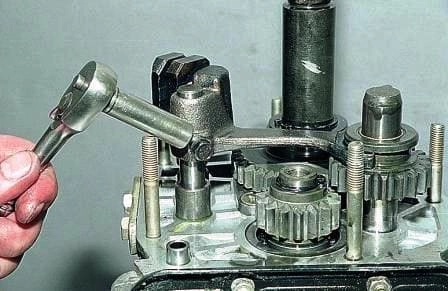
With a “10” head, we unscrew the bolt securing the reverse gear fork
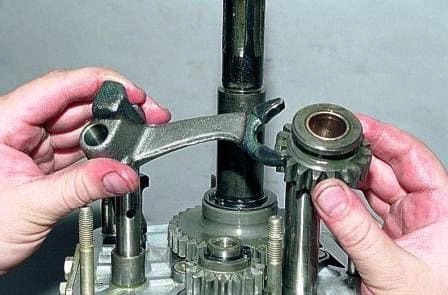
Remove the reverse fork and reverse idle gear
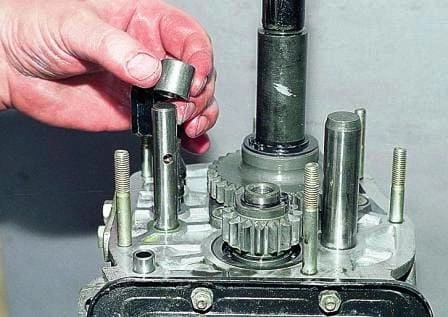
Remove the spacer sleeve from the reverse gear
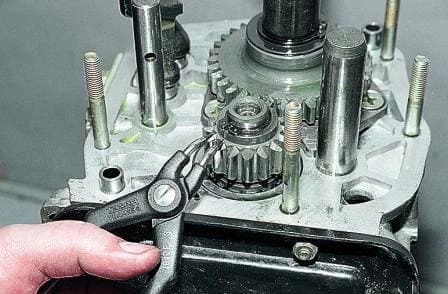
Remove the retaining ring from the intermediate shaft with a puller
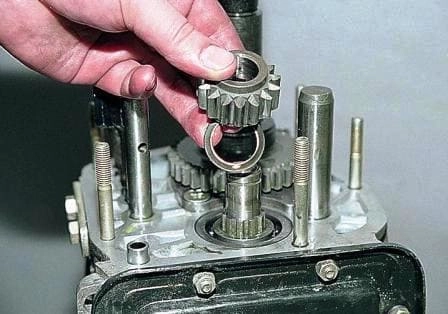
Remove the reverse drive gear and spring washer
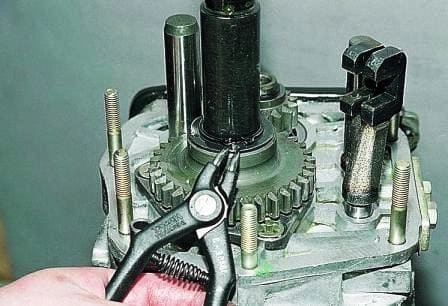
Remove the retaining ring from the secondary shaft with a puller
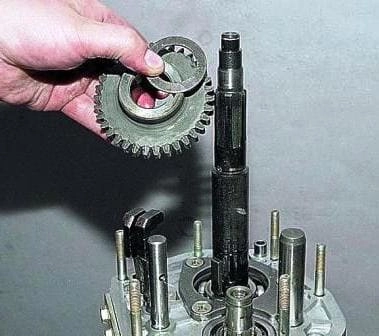
Remove the reverse driven gear and spring washer

Using an impact screwdriver, we unscrew the four screws securing the bearing lock plate and the axis of the reverse intermediate gear.

Remove the lock plate.
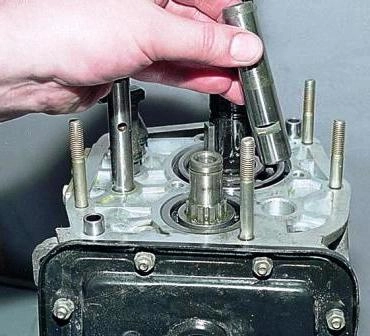
Remove the shaft of the reverse idler gear
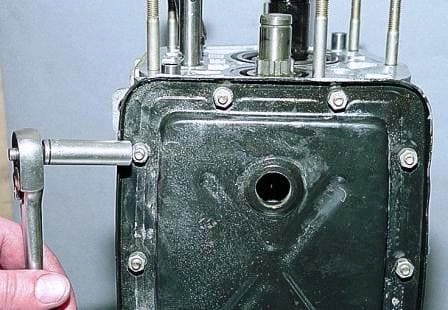
With a “10” head, unscrew ten nuts securing the bottom cover
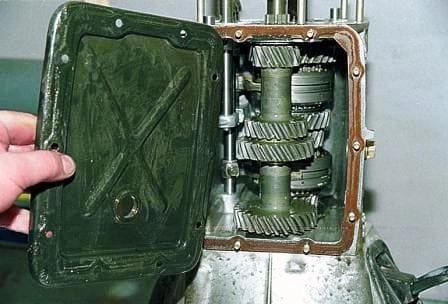
Remove the cover with the gasket.
Put the gearbox on its side.

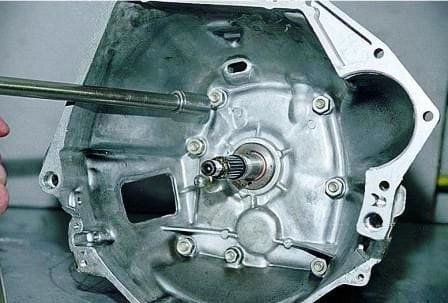
With a “13” head, we unscrew one nut, and with a “17” head, six nuts securing the clutch housing to the gearbox
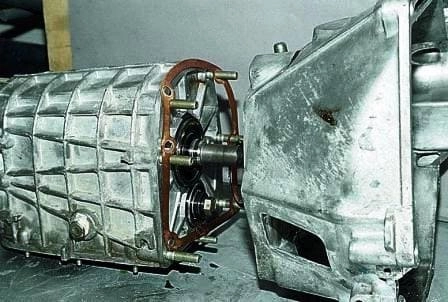
Disconnect the crankcases and remove the gasket.
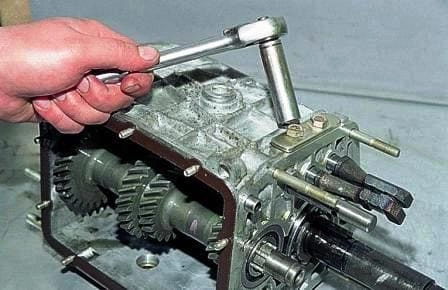
Using the “13” key, we unscrew the two bolts securing the cover of the rod clamps
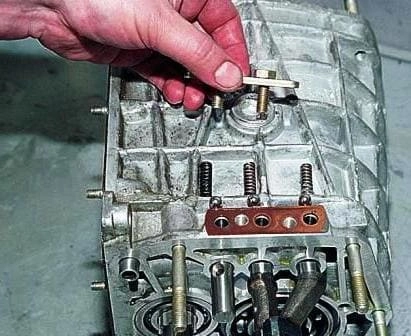
Remove the cover and remove three springs and three balls from the holes

Remove the reverse fork rod.
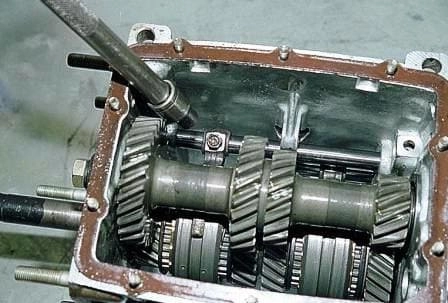
With a “10” head, we unscrew the bolt securing the fork for engaging III and IV gears
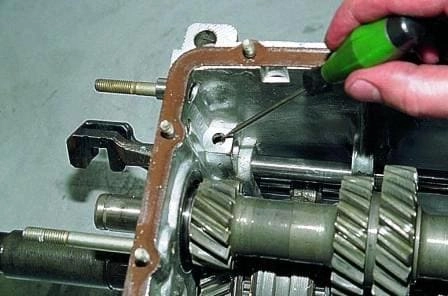
We extend the rods, at the same time removing the blocking crackers

Completely remove the 3rd and 4th gear fork stem
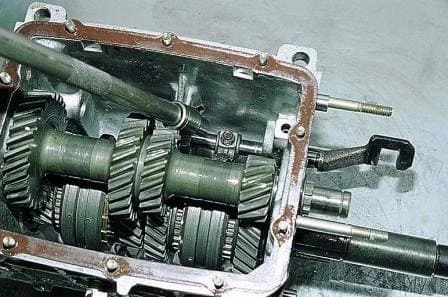
With a “10” head, we unscrew the bolt securing the fork for engaging I and II gears.
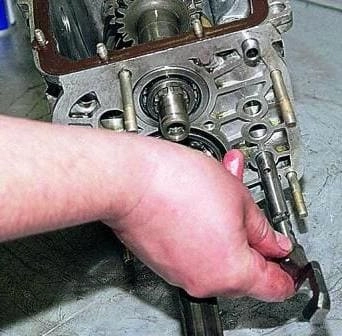
Remove the 1st and 2nd gear fork rod.
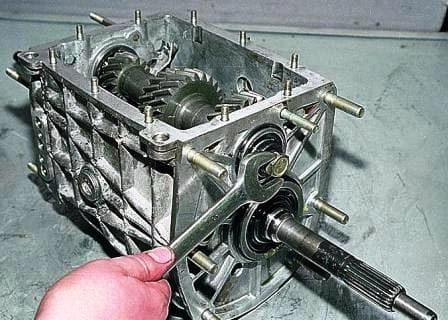
By pressing the clutches, we turn on two gears at once and with the “19” key we unscrew the bolt securing the front bearing of the intermediate shaft.
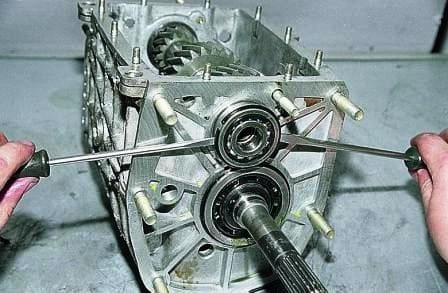
Having prying with two screwdrivers on the retaining ring, we take out the front bearing of the intermediate shaft
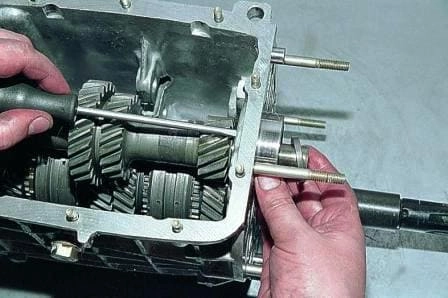
Push out the rear intermediate shaft bearing
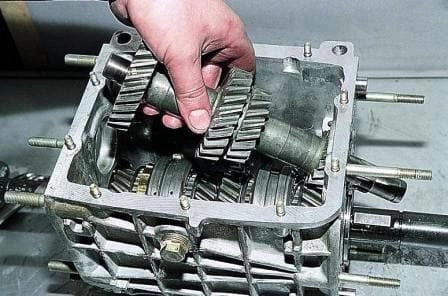
By tilting, we remove the intermediate shaft from the gearbox housing.
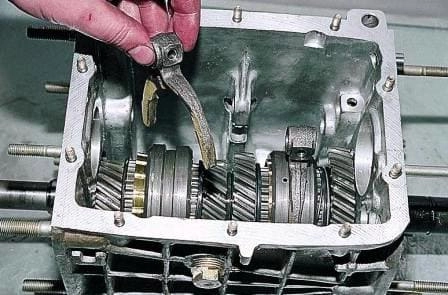
Remove the two shift forks.

Having prying with a screwdriver, we take out the input shaft assembly with the bearing and the synchronizer ring.
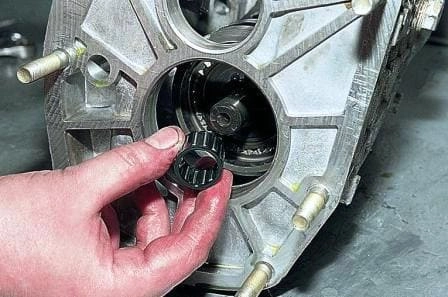
Remove the needle bearing from the secondary shaft.

Hooking with a screwdriver, remove the key from the back of the secondary shaft.
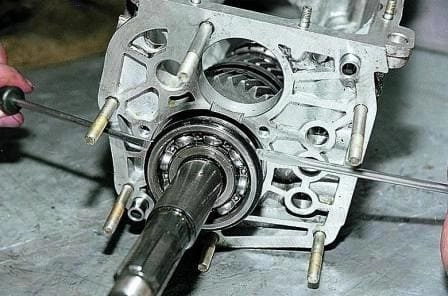
Prying with two screwdrivers, remove the rear bearing of the secondary shaft

Remove the secondary shaft from the gearbox housing.
We install the output shaft vertically, holding it in a vice through cardboard spacers
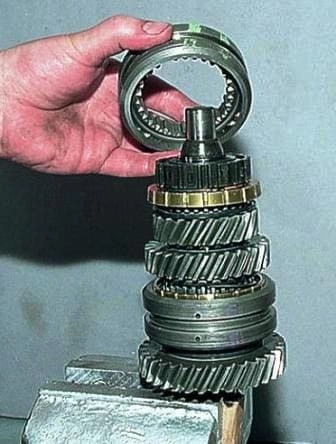
Remove the synchronizer clutch of III and IV gears.

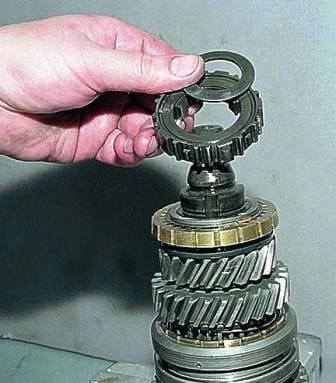
Using a puller, remove the retaining ring and remove the synchronizer hub and spring washer
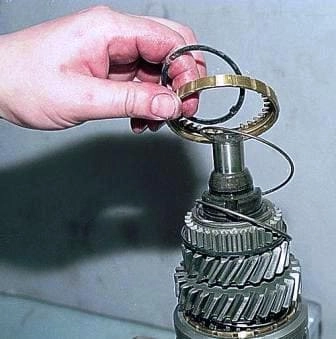
Having prying with a screwdriver, remove the retaining ring, as well as the synchronizer blocking ring and the synchronizer spring.
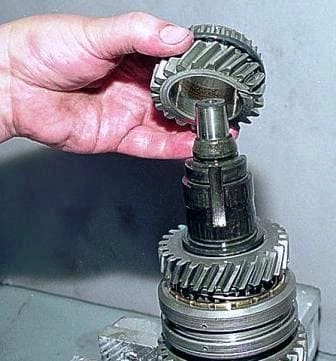
Remove the third gear
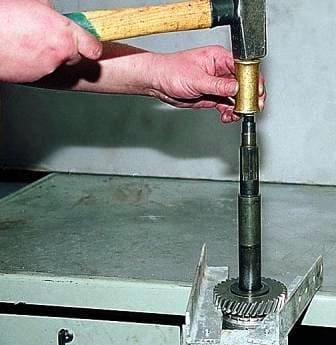
Having rested the 1st gear gear on a rigid base, with a hammer through a soft metal spacer we knock out the secondary shaft and remove the 2nd gear gear assembly, the synchronizer clutch of 1st and 2nd gears, the synchronizer hub, the 1st gear gear and the 1st gear gear bushing from it.< /p>
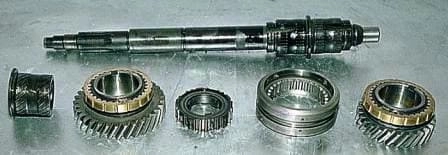
The elements of the synchronizers of I, II and IV (on the input shaft) gears are disassembled similarly to the synchronizer of the III gear.

To remove the input shaft bearing with a puller, open the retaining ring and remove it together with the spring washer

Having rested the bearing on a rigid base, we knock out the input shaft with a hammer through a soft metal drift.

To remove the gear lever from the rear cover of the gearbox housing, disconnect the return spring from the lever
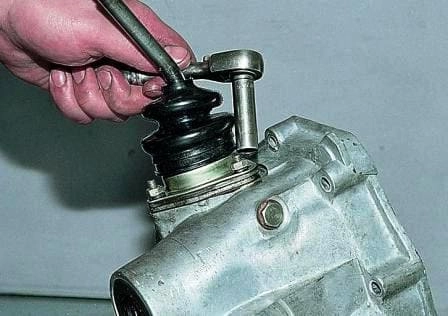
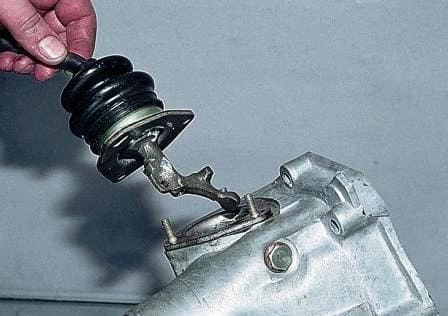
Using the “10” wrench, unscrew the three nuts securing the ball joint of the lever and remove the lever from the studs.
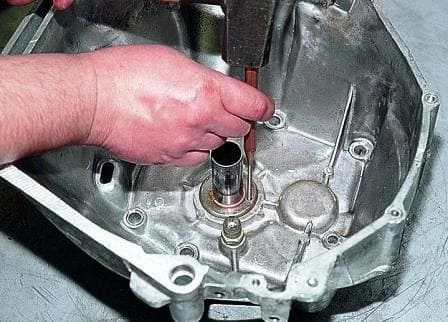
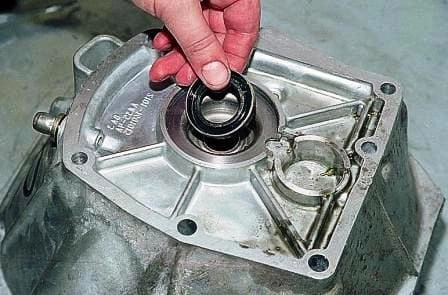
To replace the cuff of the primary (drive) shaft, we knock out the cuff with a punch through the hole in the front cover of the gearbox and remove it
Clean the gearbox parts thoroughly before inspecting.
Use a brush or scraper to remove all deposits and clean the holes and slots from possible contamination; then rinse to remove and dissolve any remaining oil.
Blow the parts with compressed air and gently wipe them.
Blow out the bearings especially carefully, directing the jet of compressed air so that the rings do not rotate quickly.
The teeth of gears and couplings should be free of chips, scuffs, fatigue chipping and noticeable wear.
The surfaces of the shafts, axles and gearshift rods must be perfectly smooth, without scuffing, pitting or heavy wear.
There should be no cracks and nicks on the crankcase, and wear and traces of turning in the bores for bearings.
Corrosion and traces of crushing and seizing are unacceptable on the splines of the shafts.
Minor damage can be repaired with fine sandpaper followed by polishing, but it is better to replace the damaged parts with new ones.
All rolling bearings, both ball and roller bearings, must be in perfect condition, their radial play must not exceed 0.05 mm, any defects on the tracks and rolling elements are unacceptable.
Separators should not have breaks, touching rings and melting (for plastic ones).
In general, if the “mileage” of the box exceeds 120 thousand km and the unit is being repaired with disassembly, it is better to replace all bearings with new ones, regardless of their condition, especially if severe damage to the gears and gear clutches has been noticed.
We replace the cuffs with new ones in any case.
When assembling, we lubricate all the parts of the box, incl. we cover the bearing seats and the bearings themselves with gear oil, the joints of the crankcase and the covers are covered with a thin layer of oil-resistant sealant, and the parts of the switching mechanism are covered with SHRUS-4 grease.
We assemble the gearbox in the reverse order of disassembly.
The spring of the reverse fork rod detent differs from others in rigidity, it has a black coating.
Before installation, we cover the working surface of the cuffs with a thin layer of Litol-24 lubricant.
We tighten the clamping washer bolt of the intermediate shaft bearing with a torque of 8.1–10.0 kgf∙m.
We tighten the nut of the rear end of the secondary shaft with a torque of 6.8–8.4 kgf∙m.





